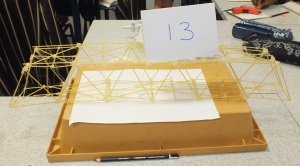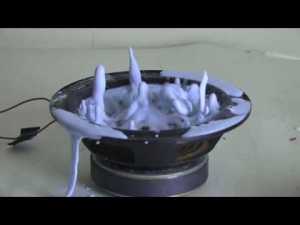The 21st of July 2012 played host to the annual Maths and Science Day. Maths and Science Day allows all year 8 students to work off timetable for the enire day, working in teams to solve scientific and engineering challenges. Deviating from the task of previous years (parachutes for eggs) the teams this year were set the challenge of building a bridge that covers a 50cm span using only spaghetti and hot-melt glue.
The girls got straight to work, ably assisted by Yr 12 students. They worked really well together, with each student contributing to the team design.
Eventually, when all the bridges were built it was time to test them. Bridges were gradually loaded with more and more force until they broke. The winning team would be the one with the highest load:weight ratio. After a nailbiting testing session, a winner was declared – Team 25 with a load:weight ratio of 11:1!
After this the teams got together to create a poster explaining their design, the science behind the engineering of bridges and an evaluation of their bridges performance. Team 10 were judged to have the best poster for their careful analysis of why their bridge collapsed with only 10g on it!
Every team worked incredibly well – their bridges may not have held a great load but they all produced a structure which they could be proud of.
Funding for the purchase of the hot-melt glue guns and the spaghetti was kindly provided by the Institute of Physics (IoP) http://www.iop.org/ , so many thanks to them for making this event possible.




